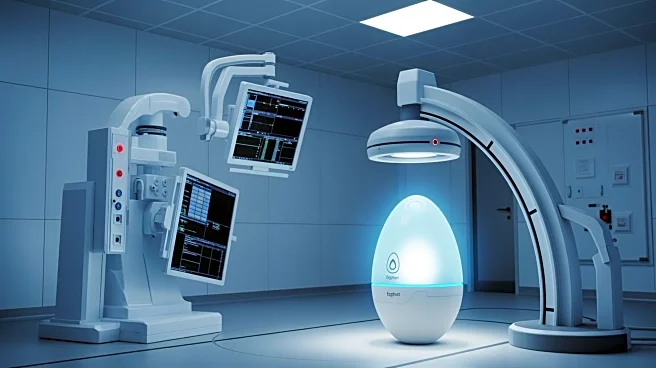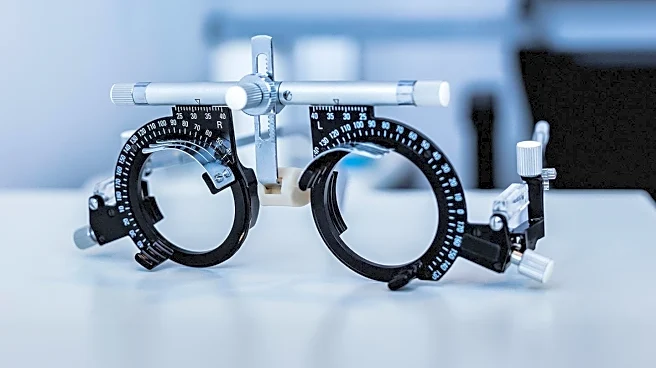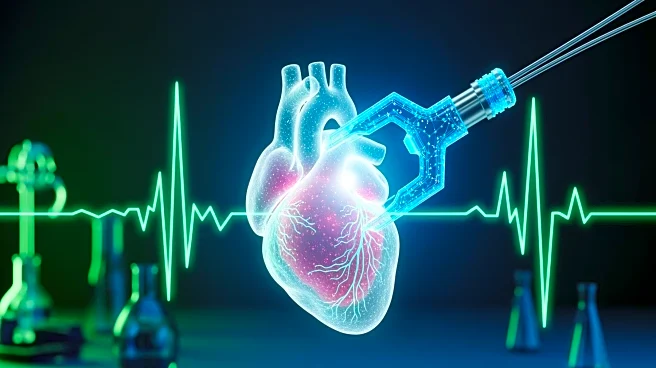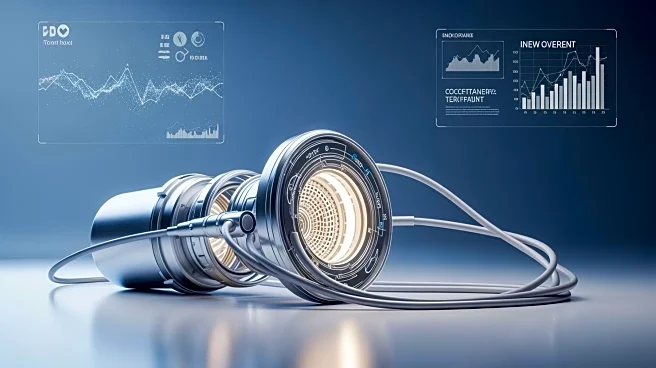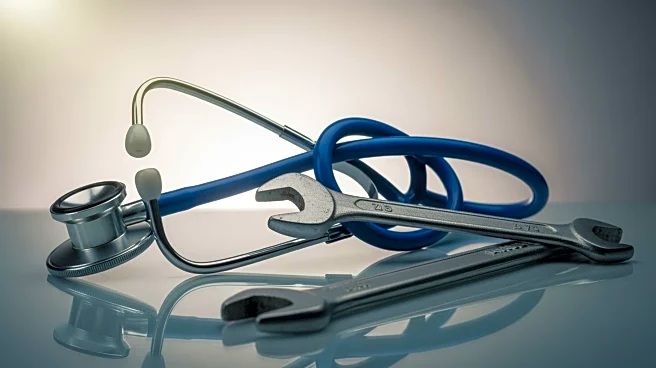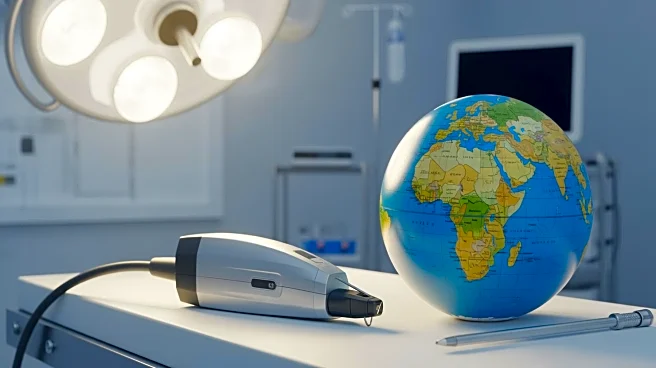What's Happening?
At the 2025 Transcatheter Cardiovascular Therapeutics Conference, Dr. Jarrod Frizzell presented studies demonstrating the effectiveness of the EggNest Complete Radiation Protection System by Egg Medical,
Inc. This system significantly reduces radiation exposure for interventional teams during X-ray-guided cardiovascular procedures. Traditional shielding methods, such as lead aprons, have been associated with orthopedic injuries among Cath lab personnel. The EggNest system offers comprehensive protection, reducing the average operator scatter radiation dose to 0.16 mRem per case, well below the annual occupational exposure limit of 5,000 mRem in the U.S. Nurses and technologists also benefit, recording average exposures of just 0.03 mRem per case. The system allows staff to perform procedures with ultralight or no lead aprons, minimizing orthopedic injuries.
Why It's Important?
The EggNest system's ability to reduce radiation exposure is crucial for the safety of Cath lab personnel, who face increased risks of cancer, cataracts, and cardiovascular disease due to scatter radiation. By minimizing the need for heavy lead aprons, the system also addresses the high prevalence of orthopedic injuries among operators and staff. This advancement in radiation protection technology not only enhances the safety of medical professionals but also improves procedural efficiency and patient care. The system's effectiveness across various X-ray-guided interventions, including structural heart and electrophysiology procedures, highlights its potential to become a standard in radiation protection.
What's Next?
Dr. Frizzell and colleagues are continuing their evaluation of the EggNest system in structural heart and electrophysiology procedures, expanding the evidence base for its use across a broad range of X-ray-guided interventions. This ongoing research may lead to wider adoption of the system in medical facilities, potentially setting new standards for radiation protection in the healthcare industry. As more data becomes available, healthcare providers may increasingly rely on the EggNest system to safeguard their teams and improve patient outcomes.


